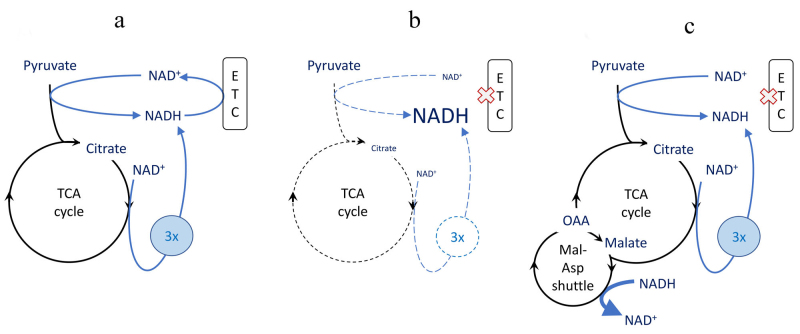Fig. 2.
Suppression and rescue of TCA cycle biosynthetic activity by NAD+ availability. The biosynthetic activity is exemplified by citrate synthesis considered essential for lipid biosynthesis. Pyridine nucleotide reactions are shown with blue arrows, “3x” denotes 3 NADH produces in one turn of TCA cycle. Width of the arrows depicts the magnitude of the fluxes and the size of the font depicts the abundance of metabolites. (X) Indicates suppression of ETC activity. a) Normal citrate production in intact oxidative phosphorylation. b) Low citrate production under conditions of suppressed electron transport chain (ETC), including via respiratory control in glycolytic switch scenario. c) A hypothetical rescue of citrate synthesis by reverse malate-aspartate (Mal-Asp) shuttle activity, oxidation of NADH by oxaloacetate (OAA). The arrow indicating NADH to NAD+ conversion is linked to Mal-Asp shuttle symbol (as opposed to OAA to malate conversion) for figure clarity. All NADH (and/or NAD+) symbols represent a single uniform NADH (and/or NAD+) pool.

